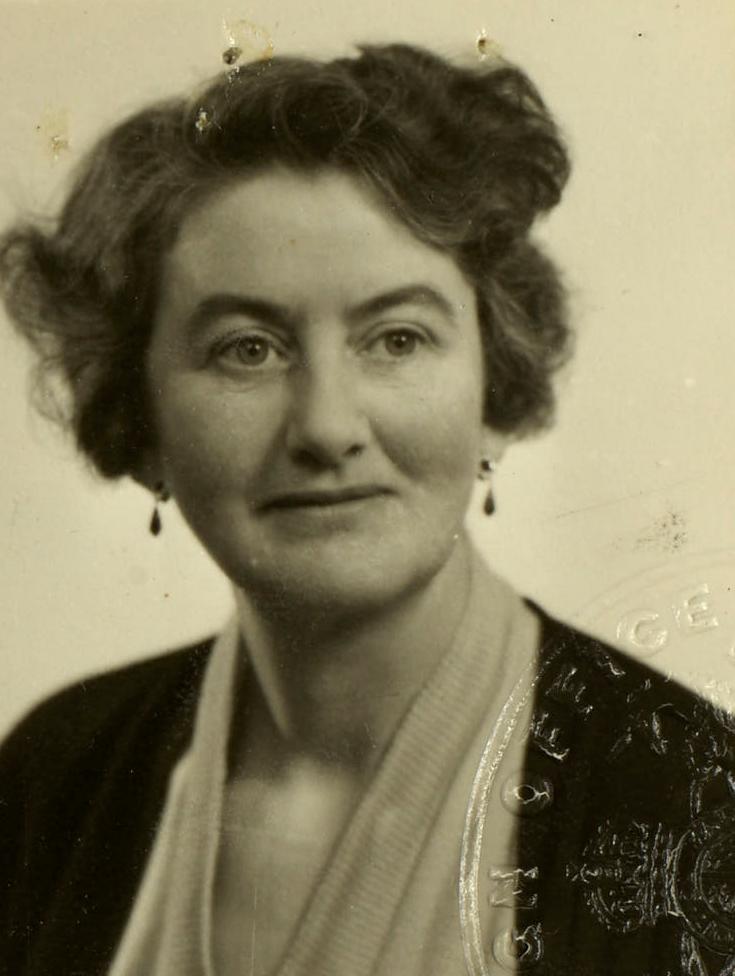
6 minute read
Roberta Hewitt
from Roberta Hewitt ebook
by Nerve Centre

Roberta Hewitt was a remarkable person. It is fitting that her life and achievement are celebrated in this book and project. Like many people partnered to a writer in the public arena she has often been obscured. The work of her husband, the poet, critic and curator, John Hewitt, has cast shadows on her own accomplishments. Yet as her journal and other writing confirms, Roberta is an important literary figure in her own right. Articulate, perceptive and insightful, she emerges as a powerful commentator who is adept at conveying her own sense of being.
Born in Larne on 30 October 1904, Roberta “Ruby” Black was the daughter of Robina (née Urquhart) and Robert Shepherd Black, a watchmaker. After little formal secondary education, Roberta gravitated to clerical work before heading, like many before her, to seek for a better life in Canada. She returned to Belfast when this did not present itself and soon became reacquainted with a family friend, John Harold Hewitt. This blossomed into a romance and the two were married on 7 May 1934. They would spend the rest of their lives together until Ruby’s death on 19 October 1975. However, the marriage was not without its tensions and difficulties and throughout her life Roberta sought fulfilment that was often lacking in her personal and public lives. For someone without a great deal of secondary education she worked in a range of jobs and involved herself in volunteering for the nursery education sector as well as for the Labour Party and a variety of political causes. Despite suffering from a number of health problems and often feeling her own wants and needs often compromised by her desire to assist John, Roberta appears in her journal as a powerful voice and chronicler.
A journal is a powerful literary genre. Especially when there is a sense that publication is not intended. It permits a sense of candour and blunt honesty to prevail. It enables the author to articulate thoughts and feelings that might be challenged or softened in other media intended for public consumption.
We must be grateful for John Hewitt’s decision to preserve Roberta Hewitt’s work after her death. It was a brave and farsighted decision. Roberta Hewitt’s work acts as an alternative perspective, even a retort to his version of events in his poems and autobiographical writings. While poets may seek out muses, this role can consign an individual into an idealised, lifeless cage.
At times the “Roberta” of John Hewitt’s work, like Dorothy Wordsworth in William Wordsworth’s poetry, becomes a means for the poet to find the perfect ally, audience and literary helpmate. She is the willing companion who appears on poems of his literary discovery tramping across the Antrim moss, at others she is the fond object of affection, believed as in a poem written in 1982 to be happiest in her garden.
Even when denoting the stresses of their marriage, the most fraught metaphor that John Hewitt can often find is that of the hedgehog timidly seeking its way in the world. Contrast this to Roberta’s version of events and a formidably different interpretation of happenings is supplied. One example of this occurs over the visit of Brendan Behan to their home in Belfast in 1952. In John Hewitt’s view, written up after the fact around a decade later in his memoir Northlight 1 :
“I was undressing for bed, my braces off my shoulders, when the telephone rang downstairs. I was asked in a thick Dublin accent ‘Is dat John Hewitt? Ye won’t know me but I’m a friend of Ben Kiely’s. Me name is Behan, Brendan Behan.” “I’m ringin’ ye to find out if ye could let me have a bed .... ‘ I asked him where he was telephoning from: ‘The top o’ the Falls’, that is, the Catholic side of the city.”
“In about half an hour the doorbell rang. When I opened it, a burly fellow lurched in, and, in the dim light of the hall, drew out of his pocket and showed me a letter from Radio Eireann to himself, as his visiting card. When we went upstairs to the flat, Roberta was up and had revived the ashes. She asked him if he would like a cup of tea, but as by an odd circumstance we had a single bottle of stout in the cupboard, he took that for preference.”
The atmosphere in the Hewitt residence is somewhat different when examining the night from Roberta Hewitt’s viewpoint which she recorded in her journal. She and Johnny had been rowing that evening and she had gone off to the spare bedroom. Upon hearing that a visitor was coming to spend the night she had shouted out: “I’m not shifting, you can take whoever it is in with you.” 2
While both accounts suggest that ultimately Brendan Behan was well looked after as a guest and the marital row dissipated quite quickly, the journal remains as an important record of Roberta Hewitt’s interpretation of matters. It captures the immediacy and raw emotion of the moment and fills in the gaps where John Hewitt’s gentler, even colder longer-range reminiscences tend to ignore and gloss over.
Most of Roberta Hewitt’s adult life had been lived in the world of letters. As well as being constant support for John Hewitt’s own aspirations for publication as muse, proofreader and long-time champion, she had been steeped in conversation on books and ideas for decades with the many individuals and groups they were connected to in their various leftist and literary circles.
1 A North Light: Twenty-five Years in a Municipal Art Gallery (2013) 2 Roberta Hewitt’s 1951-1974 Diary (D3838/4/2/2): p.602
In many ways, the more outgoing, perhaps even more ambitious one in the relationship, she had felt the need for self-expression keenly in a life whose ambitions for career and family were often thwarted or set aside to facilitate the dreams and aspirations of her spouse.
Occasional poems and reviews of books for the Belfast Telegraph indicate that her literary ambitions ranged out further at times from the private world of the personal journal. A notebook of her own reading, in the John Hewitt Archive at Ulster University details a broad engagement with classic and contemporary writers from the mid-1950s-1960s.3
Who4knows what Roberta Hewitt may have written had she had access to the room? What we do have is her journal and an important narrative of events, in her words and in her choosing. Nearly fifty years after her death, this book is testament to her power to inspire new readers to discover her thoughts and feelings on her life.
Little wonder that she longed at times in echo of Virginia Woolf for “a room of my very own & a key for it”.⁴
Frank Ferguson John Hewitt Society
3 Notebook F “Ruby’s Readings”, John Hewitt Collection, Ulster University 4 Roberta Hewitt to Sophie Stewart, 1 December 1966 (PRONI, D3838/4/1)










